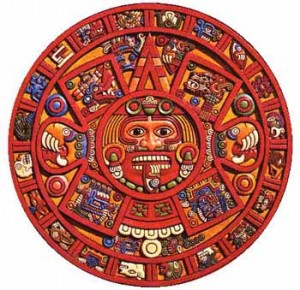Why has there been so much speculation about the Mayan 2012 calendar?
Calendars reflect how cultures and societies view the organization of time and space over the centuries. Many calendars have emerged and many have disappeared or been modified: the Julian calendar, the Republican calendar, the Gregorian calendar and the Mayan calendar to name a few. Each one involved astronomical calculations and incorporate harvests and religious or spiritual fiestas.
I remember in the late 1970s, we all studied how it would be the “End of the World for the Maya” in 2012; we thought it was “pretty neat” as to how it tied into other doomsday calculations of other cultures. With very little bibliography by Maya writers at the time (in fact none in English), we continued to believe that indeed the world—at least in Mesoamerica—would end in 2012. I have recently referred to this as a “California spin.” Watching a recent TV program on the subject, I noted that the experts were all from California. I wondered why a Maya expert was not a participant!
Talking to the experts, we find it is the end of a Mayan calendar cycle and a rebirth of the Mayan culture for the new cycle. Some great references include: The Order of Days: the Maya World and the Truth about 2012 by David Stuart (Schele Professor of Mesoamerican Art and Writing, University of Texas/Austin), 2012: Science & Prophecy of the Ancient Maya by Mark van Stone, Ph.D., and Ri Rejqalem Kisamaj Ri Ajk’ Exelom Chuqa ‘Ri Ajq’ija by Calixta Gabriel (Maya spiritual guide/Thesis Universidad Rafael Landívar), which are all outstanding. Also, refer to the Dresden Codex.
The Mayan Long Count calendar started at 13.0.0.0.0. (not “0”) in 3113 B.C. and comes to a complete cycle at the winter solstice this year. This marks a new cycle. There are two calendars that work together. The solar year (365 days), known as haab, has 18 months (20 days each) and a five-day period before the next year. A day (q’ij), a 20-day month (winäq), a year (tun), a 20-year cycle (katun) a 52-year cycle (tzolkin) and so forth up to the end of a b’aq tun (Kakchikel spelling). The sacred calendar, known as tzolk’in, has 13 months (20 days each), for a 260-day count. Each day has a nawal, look yours up in the calendar.
The new b’aq tun begins on the winter solstice 2012—time for another fiesta but this one will be BIG!
